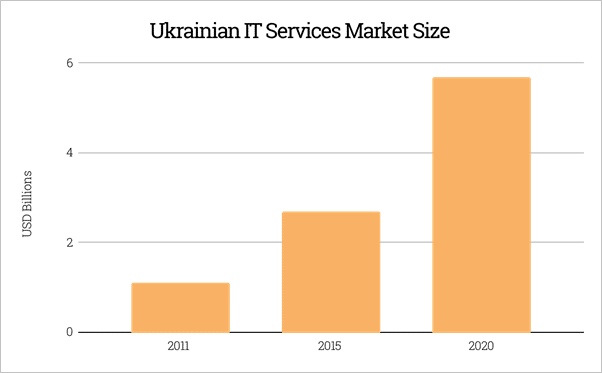Many companies have a shortage of IT skills in-house. As scaling up is costly, businesses outsource their projects. Third parties are entrusted with MVP development services or functions of entire departments. This may be realized as a dedicated team model or project-based delegation. Both options have pros and cons, which are detailed in this article.
Choosing the right path is crucial. The sheer number of outsourcing locations, providers, and engagement models makes it a challenge. This decision can mean the difference between success and failure. Follow our guide to make an informed choice.
IMAGE: UNSPLASH
What Is The Dedicated Team Definition?
The dedicated team development model involves hiring an entire team of software developers through a software provider. The experts work on a full-time basis, but they remain at the provider’s location and report to the client company.
The dedicated team model is popular with businesses that need a full development team or support for their in-house specialists. The vendor chooses the workforce and assigns tasks based on the requirements and the expertise of each member. Such indirect employment is also known as IT outstaffing. Here is an overview of the dedicated team structure.
Front-End Engineers
These dedicated developers focus on the visual side of the project — the coding, elements, and features seen by the user of a website or app.
Back-End Engineers
These members build the server side, which ensures all the front-end elements function properly.
Full-Stack Engineers
The engineers work in both fields, dealing with databases, and APIs, creating user-facing sites, and negotiating with clients.
Mobile Developers
These staff members work on apps that bring services and products to the consumers’ smartphones and tablets.
UX/UI Designers
The designers build and enhance the interface based on user feedback.
DevOps Engineers
These team members introduce processes and tools to balance needs throughout the development cycle.
Quality Assurance Specialists
These employees ensure the product meets the specifications and technical design documents.
Business Analysts
The analysts connect IT to business, monitoring the process, outlining requirements, and recommendations.
Product Managers
These specialists monitor the entire process to make sure the end product is aligned with the expectations and objectives of the client.
Benefits of a Dedicated Development Team
Should you hire dedicated developers for your project? Consider the main advantages of this model below. Transparency, cost efficiency, and expertise are some of the biggest strengths of outsourcing.
Administrative Control
The dedicated team model provides transparency and full control over the workforce structure. It may be scaled up or down based on the client’s needs. The company can request modifications or change the entire direction at any time.
Direct And Transparent Communication
The experts can work across time zones. Remote communication tools like Zoom allow direct exchange 24/7. Tracking tools are also available. IT professionals liaise with clients without intermediaries, which is one of the main dedicated team advantages.
Cost-Effectiveness And Efficiency
Any dedicated endeavor requires a clear budget. In the long term, it is more economically viable than hiring a part-time workforce. The opportunity to reduce expenditure is invaluable. In Asia and Eastern Europe, for instance, code writing is significantly cheaper than in the West.
Access To The Best Talent
Getting the best talent in-house is a challenge. Complex projects require multiple types of expertise, and the model can fill all the gaps. Whatever the requirements, clients can find a perfect match.
Complete Team Engagement
The lack of engagement is a big problem — the American economy loses $450-500 billion annually due to employee disengagement. Members of a dedicated team cooperate on a long-term basis. They receive feedback continuously, which encourages them to review and improve their work. The experts enhance their skills incessantly, which translates into better results.
Strong Tech Expertise
Failure to assess the candidates’ skills and pick the right technology stack is a recipe for disaster. Reliable providers access a broad talent pool. Their teams include top specialists with a proven track record.
High Scalability
One of the biggest pros of the dedicated team model is flexibility. The workload may be adjusted to accommodate the new requirements. A provider may exclude some members or hire more staff to develop more features.
Focused Approach
The team is committed to a single goal, which ensures total concentration. The members will not be distracted by several projects. Their focused efforts bring high-quality results, while cooperation helps them polish their skills.
Flexible Prices
A fixed model is rigorous, and any changes require large-scale re-estimation. The clients may want to modify front-end or back-end elements at different stages. For example, feedback may prompt the creators to add features or change the navigation patterns. Flexible pricing allows quick solutions.
What Are The Disadvantages Of A Dedicated Team?
In-Depth Team Integration
Not every provider can ensure full engagement. The staff may fail to develop a meaningful connection to the clients. Trustworthy companies have cohesive teams where innovation flourishes.
Recruitment Takes Time
While clients delegate recruitment, teams are not formed overnight. The provider needs time to find and assess a suitable talent. The onboarding process has its intricacies, including the need for integration with in-house coders to ensure matching methodologies.
Suitable For Large And Long-Term Projects
The dedicated model is not compatible with small-scale endeavors. At the same time, it can work wonders for massive projects lasting months or years. When requirements and goals change over time, you cannot find a better solution.
Less Straightforward Than Fixed Pricing
Businesses used to fixed models of compensation have to embrace the agility of dedicated teams. It is recommended to assess the team effort based on the hourly rate or a combination of salary + fee.
Challenges In Creating A Dedicated Team
Where to find a dedicated team and how to manage it? These services are offered by vendors all around the world, which gives companies a broad choice of providers and structures. Discover the most attractive outsourcing locations, management models, and legal considerations below. So, how to hire dedicated developers for your project? Being aware of outsourcing’s pros and cons is crucial.
Where To Hire A Dedicated Team
In terms of cost-effectiveness, the most alluring locations are found in Eastern Europe. Companies in Ukraine, Romania, and Poland have competitive pricing combined with other benefits — a high level of tech education and skills.
How To Choose The Right Supplier
As so many vendors may be tasked with creating a dedicated team, your company needs strict criteria. Research the providers and make a list based on the quality, track record, expertise, and security standards. Check reviews and references on the official site, profiles on LinkedIn, and ranking platforms like Clutch. Choose a seasoned vendor with proven compliance with applicable standards.
How To Manage Your Dedicated Team
Companies hiring an extended team let the provider deal with scaling and administration only. The managed team approach is based on sharing risks and responsibilities: the vendor recruits talent and manages the team, ensuring technology alignment. Finally, an outsourced team is best for businesses that want to delegate all the decisions to the provider.
Legal Aspects Of Hiring Dedicated Team
Knowing how to manage your dedicated team is not everything. Businesses need to share sensitive data, and both parties must protect their rights. It is recommended the staff sign a Nondisclosure Agreement before commencing work. The contract should stipulate the following:
- Penalties in case of non-compliance
- Liability clauses for both parties
- Deadlines for invoices and payment
- Warranty guaranteeing a particular quality level
- Notice periods for all key stages
- Data protection policies
- Client’s ownership of the code
- The governing law for international contracts
Project-Based Outsourcing
For small-scale projects (for small startups or MVP development), businesses may consider hiring project-based developers rather than entire dedicated groups. Teams are formed for single projects: the vendor finds suitable talent in-house to perform the tasks. The developers communicate with the client indirectly through their employer. Learn about the outsourcing pros and cons below. First, why would you consider project-based development?
- Cost efficiency, as outsourcing reduces development costs.
- Time efficiency, as the project is completed by the vendor, while the business may focus on its core activities
- Delegation of routine tasks, as the client’s staff are not involved in the process
- Recruiting, as tech talent is found by the vendor.
Project-based development has its challenges and intricacies, too. Companies that do not know how outsourcing works make wrong decisions that can be costly. Here are some of the most common disadvantages:
Insufficient Control
You may have little control over the process as the work is done by contractors.
Hidden Costs
Define all possible expenditures from the start. Sometimes, businesses have to pay more than they expected due to underestimation.
Temporary Solution
The model is commonly used for short-term projects, although there are exceptions. Many companies benefit from having a dedicated team for lengthy projects.
No Access To Tech Talent
The provider’s talent pool is only accessible throughout the contract. Upon completion of the project, the connection is lost.
Inexperienced Team
All team members are chosen by the vendor. The client may not know what experts are responsible for the product.
Lack Of Transparency
This affects all vital aspects of outsourced work, from costs to progress. One of the biggest challenges is the lack of clarity, which can jeopardize the entire project.
Lack Of Motivation
The team needs a meaningful connection to your business to have an in-depth understanding of its goals and needs. When it is limited to contract stipulations, motivation wanes.
Final Thoughts
Companies may hire dedicated developers or opt for project-based development depending on the nature and scope of their tasks. Choose a delegation method based on your needs.
If you are interested in even more technology-related articles and information from us here at Bit Rebels, then we have a lot to choose from.



COMMENTS